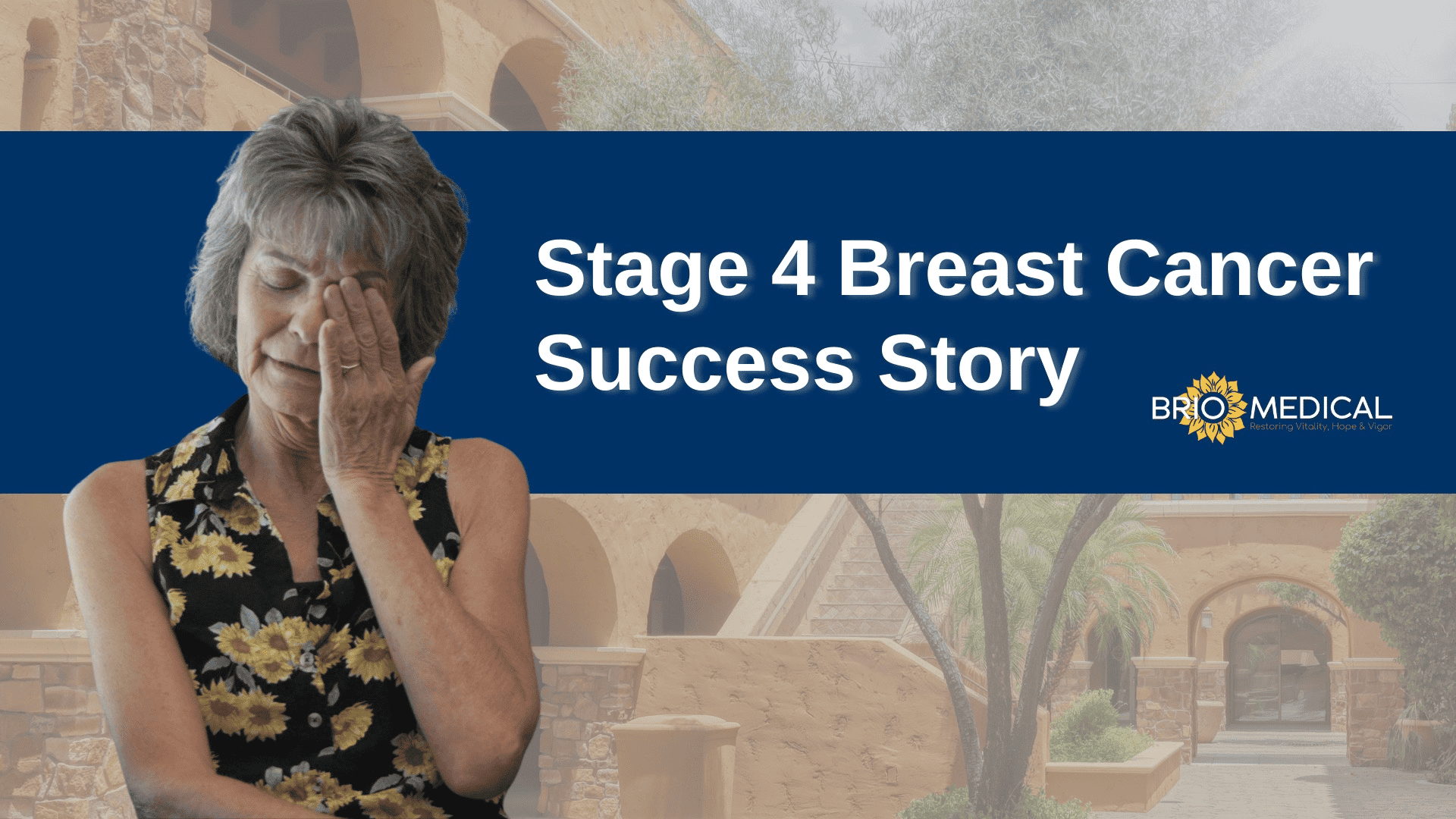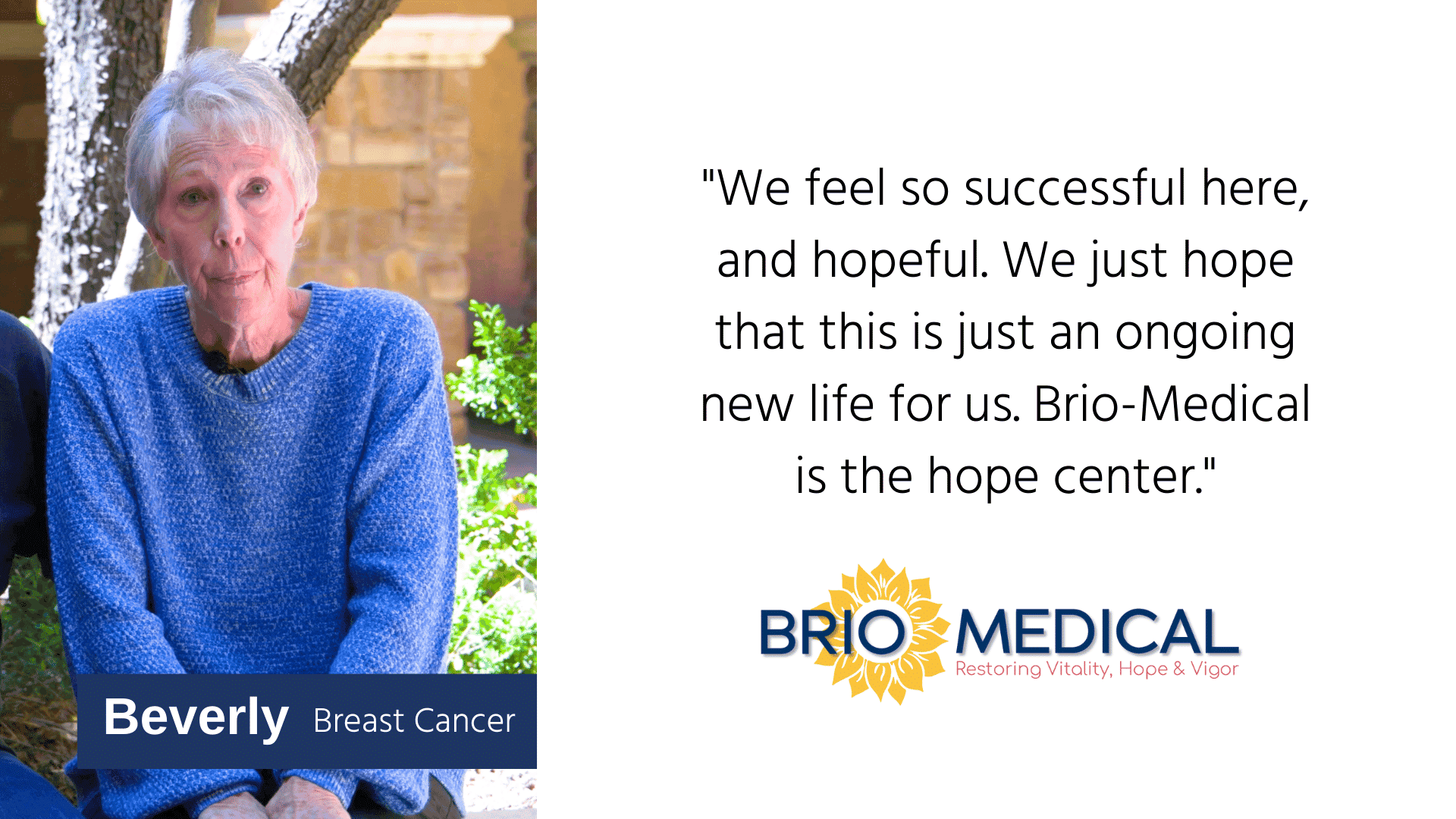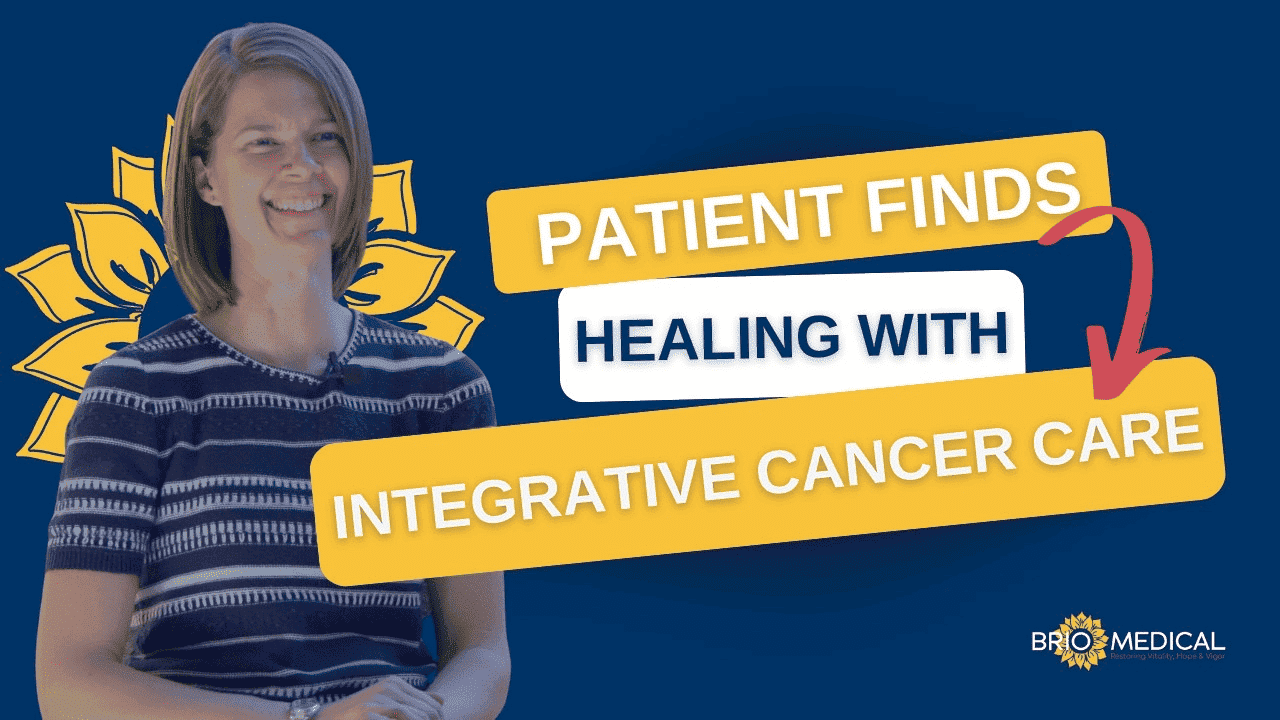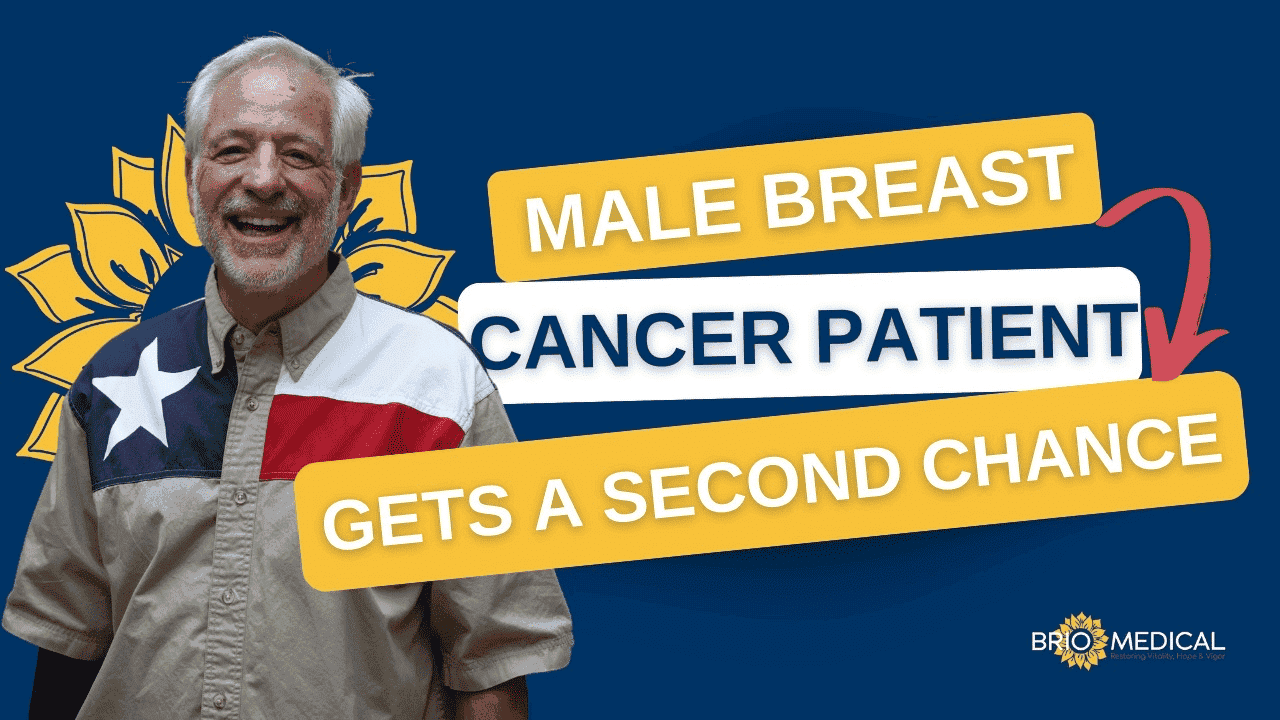Holistic Breast Cancer Treatment Program
Breast cancer is the most frequently occurring cancer in women, accounting for about 15% of all new cancer cases. Statistical projections estimate that nearly 13% of women will eventually be diagnosed with female breast cancer.
Men can get breast cancer, too, although rarely. Male breast cancer makes up only 1% of the breast cancers diagnosed in the U.S., but it's a priority health concern for men in high-risk groups.
Brio-Medical provides an integrative approach to Breast Cancer treatment utilizing chemotherapy alternatives.
Our clinic located in Scottsdale, Arizona uses natural therapies for life-changing results.
Breast Cancer Patient Success Stories
The most remarkable testimony to the results of the holistic treatments offered at Brio-Medical comes from the inspiring stories of actual Breast Cancer patients and their families.
Male Breast Cancer Patient Success Story
Breast Cancer in men is a rare condition. Hear the inspiring story below from a male breast cancer survivor at Brio-Medical.
What Is Breast Cancer?
Breast cancer is caused by the uncontrolled proliferation and growth of abnormal cells in the breast.
The breast comprises two main types of tissues: the glandular tissues, which include lobules and ducts, and stromal tissues, which form the fatty and fibrous connective structures.
Cancer can develop in any of these tissues, often creating one or more tumors (a lumpy mass of scar-like tissue) in the affected breast.
Breast cancer tumors can be either benign or malignant. Benign or in situ tumors are non-invasive, remaining where they first form.
On the other hand, malignant tumors are invasive and can quickly spread to nearby tissues and sometimes to other organs entirely. A majority of breast cancers (81%) are invasive.
What Are the Main Types of Breast Cancer?
There are several types of breast cancer. The disease is generally classified based on the specific cells or tissues it originates from or its effects.
These are the common types of breast cancer:
- Ductal Carcinoma in Situ (DCIS) – Starts in the cells lining the milk ducts. This is the most frequently occurring non-invasive breast cancer though it’s highly treatable, especially in the early stages. But if left unchecked, DCIS can develop into Invasive Ductal Carcinoma (IDC).
- Lobular Carcinoma in Situ (LCIS) – Also known as Lobular Neoplasia, it starts in the lobules (the specialized glands that produce breast milk). If not treated early, LCIS escalates to Invasive Lobular Cancer (ILC).
- Infiltrating Ductal Carcinoma (IDC) – Begins in the milk ducts and eventually penetrates the ductal walls and into the stromal tissues. IDC can also metastasize (spread to other organs and tissues outside the breast).
- Medullary Carcinoma – A rare subset of IDC, making up less than 5% of all invasive breast cancer cases. It starts in the milk ducts and gradually spreads to the surrounding tissues, forming a distinct boundary between the tumor and the surrounding tissues.
- Inflammatory Breast Cancer – An extremely aggressive and fast-growing but rare breast cancer that invades the axillary lymph nodes and the breast skin. It usually doesn’t form noticeable tumors, but it can block the lymph nodes and irritate the skin, causing inflammatory-like symptoms such as itching, warming, and rashes.
- Triple-Negative Breast Cancer – The cancer cells lack all three of the most common endocrinal receptors that fuel most breast cancer growth (progesterone, estrogen, and the HER-2/neu gene).
- Other types – Other special and rare types of breast cancer include Tubular Carcinoma, Mutinous Carcinoma, Paget Disease, and Phyllodes.
What Are the Signs and Symptoms of Breast Cancer?
Breast cancer symptoms vary from person to person, depending on the type of cancer and its stage of development.
Symptoms can also range from mild to severe, while some cases are completely asymptomatic.
The early warning signs and symptoms of breast cancer include:
- One or more lumps in the breast, under the arm, or below the collarbone
- Swelling of all or part of the breast, even without a noticeable lump
- Unexplained change in the breast’s appearance, shape, size, mass, or texture
- Nipple retraction — the nipple turns inward
- Tenderness or pain to the touch
- Flaking or peeling of the nipple skin
- Discharge from the nipple (other than milk)
- Dimpling of the breast skin
- Frequent itching and irritation in the breast or its surface
How Is Breast Cancer Diagnosed and Staged?
The key to successful cancer treatment is early detection. Fortunately, breast cancer is relatively easy to detect and diagnose; you can even do it yourself to some degree.
Most breast cancers cause noticeable physical changes in the breast, which you can pick up during a routine breast self-exam.
Make a habit of checking your breasts for lumps and other abnormalities at least once a month — ideally, 3 to 5 days after your period starts or on the same day each month.
Do so in these five steps:
- Begin with a visual examination of the breast. Stand in front of a mirror and look for changes in the size, shape, symmetry, texture, or tone in the breast and the nipple.
- Lie down on your right side with your right hand behind your head. Gently run your left-hand fingers down the right breast in small motions while pressing down firmly. Then do the same for the other breast.
- Stand or sit with one arm raised above your head and feel the area under each arm for lumps.
- Gently squeeze each nipple to check for unusual discharge.
- See a doctor immediately if you notice even the slightest abnormalities.
Up to 25% of breast cancer cases are detected through self-examination. However, not all lumps or changes may indicate breast cancer.
The National Breast Cancer Foundation recommends a 3-step plan for early breast cancer detection that follows up the self-exam with a clinical assessment.
During a clinical evaluation, the doctor examines the breast and may require a monogram, ultrasound/MRI scan, or breast biopsy for further investigation.
The Stages of Breast Cancer
Breast cancer has five stages of progression, largely based on the tumor’s size, grade, and growth.
These stages indicate how far the disease has spread or developed at the time of diagnosis:
- Stage 0 (In situ) – Abnormal cells are present but have not spread to nearby tissues.
- Stage I (Early stage) – The cancer cells have spread to nearby tissues.
- Stage II (Localized) – The tumor is still growing; it's about 20-50 mm at this stage but still contained within the breast.
- Stage III (Regional spread) – The tumor has grown larger than 50 mm and started to spread to nearby areas such as the lymph nodes, skin, and upper chest region.
- Stage IV (Distant spread) – The cancer has metastasized and spread far beyond the breast — usually to the bones, lungs, and liver.
How We Treat Breast Cancer Holistically
Brio-Medical is a firm believer in New Age holistic medicine that promote healing from within.
Rather than address the disease or its symptoms alone, our alternative remedies get to the root cause of the problem and stimulate the body's natural healing abilities.
Some of our treatments can be administered independently, while others work best when paired with traditional anticancer medicine.
If you’re looking for alternative cancer medicine, Brio-Medical is the place to be. We develop personalized treatment plans for our breast cancer patients around natural therapies such as:
- Immunotherapy – Stimulates the body’s natural defenses to kill cancer cells.
- Hormonal therapy – Most breast cancers are either estrogen receptor-positive (ER-positive) or progesterone receptor-positive (PR-positive) and can be managed by carefully controlling the level of progesterone or estrogen in the blood.
- Hyperthermia – We apply heat to the affected breast or the tumor itself to selectively destroy the cancer cells lurking within.
- Vitamin C IV Therapy – Vitamin C (ascorbic acid) is a potent antioxidant, healing agent, immune booster, and anticancer factor.
- Low-Dose Metronomic Chemotherapy – We pair Low-Dose Metronomic Chemotherapy with low-dose chemotherapy to improve the medication’s effectiveness and reduce its unpleasant side effects.
- Ozone Therapy – A repeated infusion of ozone boosts general physiological health and helps fight cancer by improving blood circulation, aerobic metabolism, detoxification, and cellular vigor.
Talk to our specialists to learn more about breast cancer and the holistic breast cancer treatments that might work for you.
Breast Cancer References:
- Sharma, Ganesh N et al. “Various types and management of breast cancer: an overview.” Journal of advanced pharmaceutical technology & Research vol. 1,2 (2010): 109-26.
- National Cancer Institute. “Cancer Stat Facts: Female Breast Cancer.” Surveillance, Epidemiology, and End Results Program. Accessed August 22, 2022.
- Centers for Disease Control and Prevention.” Breast Cancer in Men.” Division of Cancer Prevention and Control. Page last reviewed: September 22, 2021. Accessed August 22, 2022.
- Dai, D., Shi, R., Wang, Z. et al. “Competing Risk Analyses of Medullary Carcinoma of Breast in Comparison to Infiltrating Ductal Carcinoma.” Sci Rep 10, 560 (2020). Doi:10.1038/s41598-019-57168-2.
- Limaiem F, Mlika M. “Medullary Breast Carcinoma.” In: StatPearls [Internet]. Treasure Island (FL): StatPearls Publishing; 2022. Updated June 27, 2022. Accessed August 22, 2022.
- American Cancer Society. “Breast Cancer Facts & Figures 2019 – 2020.” American Cancer Society, Inc. 2019. Accessed August 22, 2022.
- Roth, Mara Y et al. “Self-detection remains a key method of breast cancer detection for U.S. women.” Journal of women's health (2002) vol. 20,8 (2011): 1135-9. doi:10.1089/jwh.2010.2493
- National Breast Cancer Foundation (NBCF). “3 Steps to Early Detection.” Accessed August 22, 2022.
- National Health Service (NHS). “What do cancer stages and grades mean?” Operations, tests, and procedures. Page last reviewed: December 16, 2021. Accessed August 22, 2022.
- Sleightholm, Richard et al. “Percentage of Hormone Receptor Positivity in Breast Cancer Provides Prognostic Value: A Single-Institute Study.” Journal of clinical medicine research vol. 13,1 (2021): 9-19. doi:10.14740/jocmr4398.










